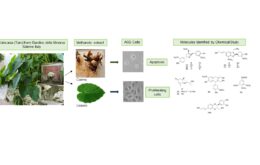In the light of the “Biological Diversity” concept, habitats are cardinal pieces for biodiversity quantitative estimation at a local and global scale. In Europe EUNIS (European Nature Information System) is a system tool for habitat identification and assessment. Earth Observation (EO) data, which are acquired by satellite sensors, offer new opportunities for environmental sciences and they are revolutionizing the methodologies applied. These are providing unprecedented insights for habitat monitoring and for evaluating the Sustainable Development Goals (SDGs) indicators. This paper shows the results of a novel approach for a spatially explicit habitat mapping in Italy at a national scale, using a supervised machine learning model (SMLM), through the combination of vegetation plot database (as response variable), and both spectral and environmental predictors. The procedure integrates forest habitat data in Italy from the European Vegetation Archive (EVA), with Sentinel-2 imagery processing (vegetation indices time series, spectral indices, and single bands spectral signals) and environmental data variables (i.e., climatic and topographic), to parameterize a Random Forests (RF) classifier.
| 2021 |
| Emiliano Agrillo, Federico Filipponi, Alice Pezzarossa, Laura Casella, Daniela Smiraglia, Arianna Orasi, Fabio Attorre, and Andrea Taramelli |
| Articolo – Earth Observation and Biodiversity Big Data for Forest Habitat Types Classification and Mapping, Remote Sensing. 2021, 13(7): 1231, 29 pages |
| https://doi.org/10.3390/rs13071231 |



